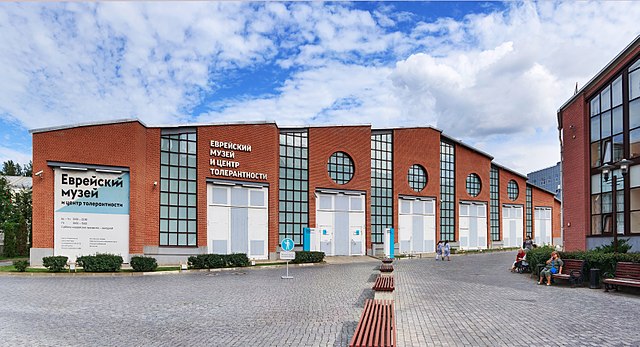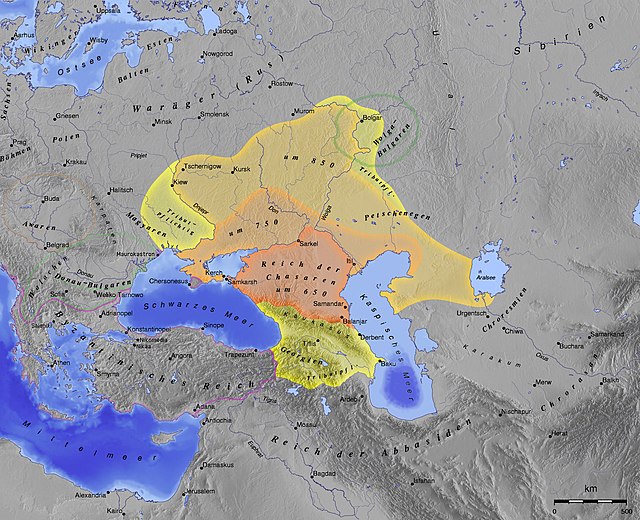Bilu was a Jewish movement of the late 19th century, fueled predominantly by the immigration of Russian Jews, whose goal was the agricultural settlement of the Land of Israel. Its members were known as Bilu'im, and the movement sought to inspire Jews to migrate to Ottoman Palestine. The Bilu'im rejected progressive notions such as Emancipation and assimilation as viable options for Jewish survival. The movement collapsed as a result of the challenging farming conditions in Palestine and a lack of funding to sustain the settlers.
Bilu Museum in Gedera
Bilu members Ze'ev Vladimir Dubnov, Ya'acov Shertok and Chaim Chissin in Russia in 1890
Israel Belkind (founder of movement).
History of the Jews in Russia
The history of the Jews in Russia and areas historically connected with it goes back at least 1,500 years. Jews in Russia have historically constituted a large religious and ethnic diaspora; the Russian Empire at one time hosted the largest population of Jews in the world. Within these territories, the primarily Ashkenazi Jewish communities of many different areas flourished and developed many of modern Judaism's most distinctive theological and cultural traditions, while also facing periods of antisemitic discriminatory policies and persecution, including violent pogroms. Some have described a "renaissance" in the Jewish community inside Russia since the beginning of the 21st century; however, the Russian Jewish population has experienced precipitous decline since the dissolution of the USSR which continues to this day, although it is still among the largest in Europe.
The Jewish Museum and Tolerance Center in Moscow, the largest Jewish museum in Russia.
The Khazar Khaganate (650–850)
Peter Shafirov, vice-chancellor of Russia under Peter the Great
Shneur Zalman of Liadi, founder of Chabad Lubavitch, 1775







